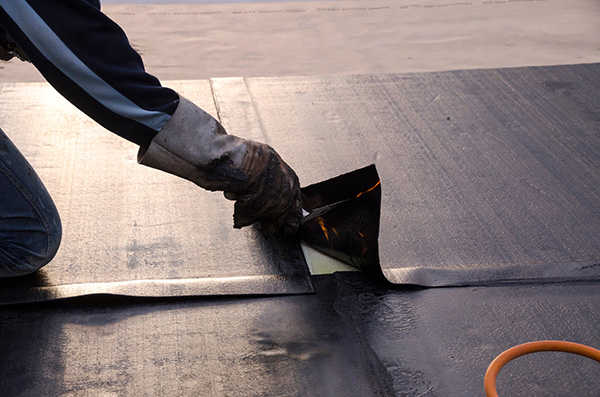Roof Blistering Causes, Prevention and Treatment
Author: Amy Freeman | August 7, 2024
In a perfect world, a flat roof will stay flat, without any bumps or blisters. Reality often looks a little different, though, and roof blistering can be a fairly common occurrence. If you notice roof blisters during a routine roof inspection, or a commercial customer contacts you about them, here's what you need to know to fix or prevent them.

What Are Roof Blisters?
A blister forms when fluid or air gets trapped between two layers of material. The water or air causes the material to separate, creating a soft bubble on the surface of the roof. Blisters can form on roofs with shingles, panels or coatings made from bitumen or asphalt.
Roof blisters can be small, just a few inches in diameter, or large, several feet across.
What Causes Roof Blistering?
A few things can lead to roof blistering. One common cause of blistering on commercial roofs is poor installation. When a roof isn't installed correctly, air or moisture can get trapped between the layers, causing separation. Certain installation techniques, such as bitumen mopping, can increase the risk of blisters, particularly if the wrong form of bitumen is used. Blisters may also form if the hot asphalt cools before the installer applies a roll of bitumen.
Another common cause of roof blisters is exposure to ultraviolet light. Prolonged exposure to the sun's rays will weaken roof materials, making blisters more likely to form.
The Effects of Roof Blisters
Roof blisters can lead to serious damage, particularly if water or moisture becomes trapped inside. And typically, the larger the blister, the bigger the problem.
The moisture can cause the materials to break down, potentially causing structural issues. Blisters can also shorten the life span of a roof. Fortunately, there are ways to prevent blisters from forming or to fix them.
How to Prevent Roof Blisters
Proper commercial roof installation is usually the best option for preventing roof blisters. Roofing contractors should follow the manufacturer's instructions when applying roofing materials and not take shortcuts. While it's important to work quickly, you don't want to rush a project and end up skipping steps or creating a situation that allows moisture, debris or air between the roof's layers.
Regular maintenance and inspection can also help prevent roof blisters. Keeping the roof clear of debris means there's less chance for dirt or twigs to get stuck between the roof's layers. Since wear and tear on the roof can also increase the chance of blistering, it's a good idea to limit the amount of foot traffic on the roof as much as possible.
How to Fix Roof Blisters
Whether you need to fix roof blisters depends in large part on the size of the blisters and how many there are. If a roof is covered in large blisters, a tear-off or full replacement may be the best option.
If the blisters are on the smaller side and are intact, they can usually be left as-is. Blisters that are showing signs of wear or that are cracking should be corrected, though, as water can seep into the cracks, causing additional damage.
To fix smaller blisters, remove the upper layer and repair or replace the inner material. You may need to use asphalt patches to correct the problem.
Often, the sooner you fix roof blisters, the better, as fixing smaller blisters is less labor-intensive and more cost-effective than repairing larger ones or redoing the entire roof.
Consider staying in touch with your commercial customers, encouraging them to schedule regular inspections and ongoing maintenance to keep their roofs functioning and looking like new for as long as possible. Doing so will be good news for your customers' roofs, their satisfaction levels and your business's success.